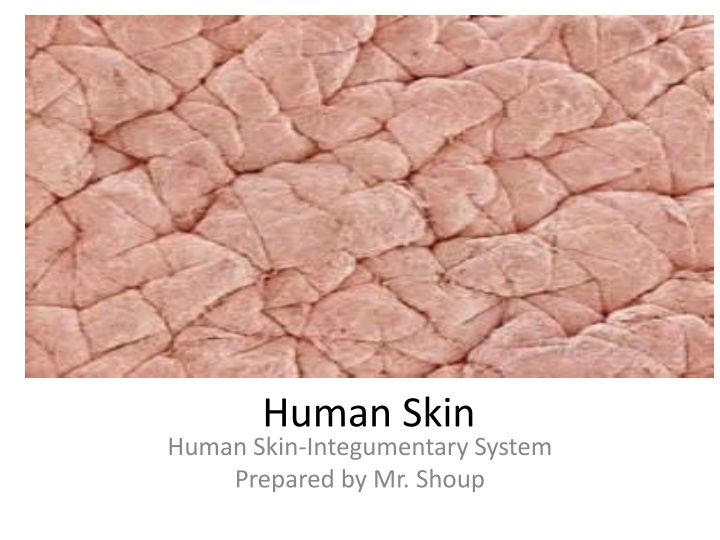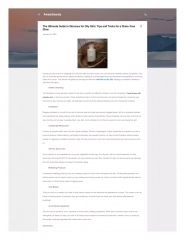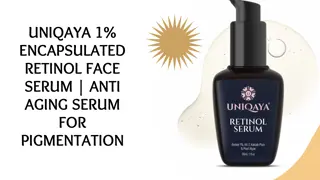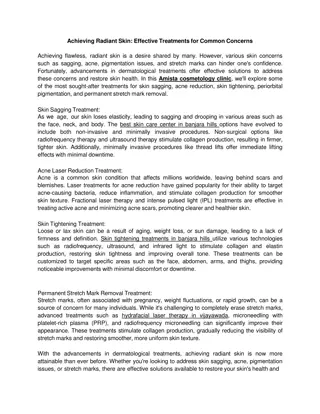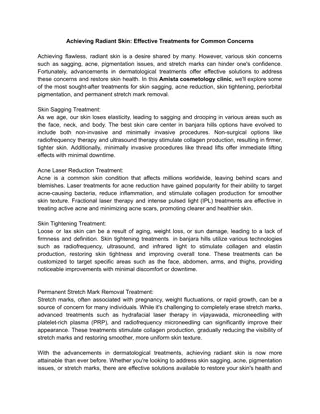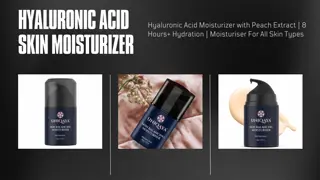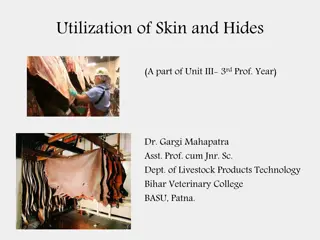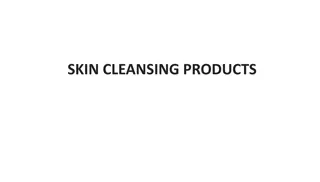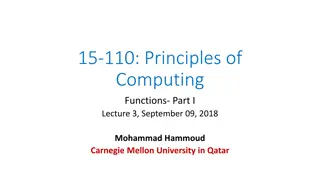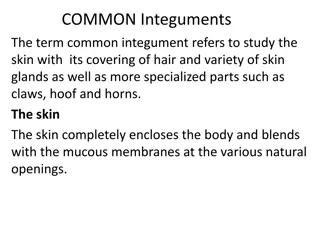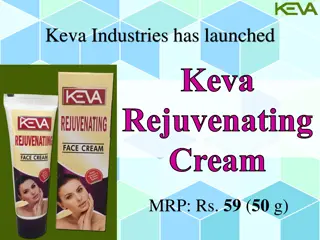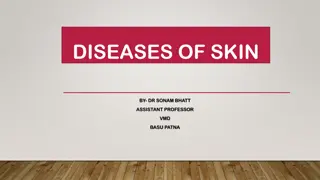Fascinating Facts and Insights into Human Skin and Its Functions
Human skin, the largest organ in the body, plays crucial roles in temperature regulation, protection, and sensory reception. With an intricate structure comprising multiple layers housing sensory nerves, glands, and blood vessels, our skin is a remarkable feature that constantly renews itself while also being susceptible to various disorders like boils. Explore the wonders and complexities of the integumentary system through this enlightening overview.
Download Presentation

Please find below an Image/Link to download the presentation.
The content on the website is provided AS IS for your information and personal use only. It may not be sold, licensed, or shared on other websites without obtaining consent from the author.If you encounter any issues during the download, it is possible that the publisher has removed the file from their server.
You are allowed to download the files provided on this website for personal or commercial use, subject to the condition that they are used lawfully. All files are the property of their respective owners.
The content on the website is provided AS IS for your information and personal use only. It may not be sold, licensed, or shared on other websites without obtaining consent from the author.
E N D
Presentation Transcript
Human Skin Human Skin-Integumentary System Prepared by Mr. Shoup
Skin In the complex human body: Largest organ of the body 1 square inch of skin on the hand sprouts 30 hairs Holds 9 feet of blood vessels 134 yards of nerves 9,000 nerve endings 700 pain, heat, and pressure sensors. 30million bacteria live on skin at least 1 inch of skin has at least 630 sweat glands No hair on the sole of the feet, palm of hand and your lips Lose 600,000+ skin cells per hour, 15 million skin cells per day=1.6lbs per year. 80% of house dust
Function of the Skin Temperature control Protection against the elements Water Proof Receive stimulus-touch-pressure, cold, hot, pleasure and pain Manu factor vitamin D 8-9pounds of skin on the average human body. 12-20 square feet of skin Skin grows from bottom up to the top layer. Melanin-pigment that gives skin its color.
Skin Layers 1/5thto 1/25thof an inch Epidermis Layer:-outer layer-dead cells. 45-75 days average to replace-bottom up! Dermis Layer: Live skin layer, contains the skin parts. Nerves-sensory nerves Sense receptors: hot, cold, pain, pressure, pleasure Sweat Glands-produce perspiration-sweat (water & salt) 2million+ Sebaceous glands-produces sebum-oil of skin Hair follicles-produce hair 90,000-140,00 on your head alone. Hair is dead cells that contains keratin-root is live. Subcutaneous Layer: Fat, muscle layer(s) Nerves come through to the dermis layer. Blood vessels come through to the dermis layer
Skin Disorders Boils: A boil is a skin infection that starts in a hair follicle or oil gland. Also referred to as a skin abscess, it is a localized infection deep in the skin. A boil generally starts as a reddened, tender area. Over time, the area becomes firm and hard. Eventually, the center of the abscess softens and becomes filled with infection- fighting white blood cells that the body sends via the bloodstream to eradicate the infection. This collection of white blood cells, bacteria, and proteins is known as pus. Finally, the pus "forms a head," which can be surgically opened or spontaneously drain out through the surface of the skin. http://www.medicinenet.com/boils_pictures_slideshow/article.htm Summary: Bacterial infection-Staphylococcus Aureus Red bump/green core develops-dead blood cells, dead cells, protein forming pus sac. Treatment: Lancing and drained out/warm packs Antibiotics may be prescribed
Acne Acne begins with the development of a plug of hardened sebum that stops up the openings of the follicular pores on the face. These plugs seem to become darker with age, hence the term blackheads. When there is a layer of skin covering the follicular opening, the sebaceous plug usually does not darken and is called a "whitehead" by some. Once the follicle becomes clogged, it will enlarge as more skin and sebum is produced behind it. Bacterial contamination of this sebaceous mixture is common since bacteria normally inhabit the follicle. If stretched enough, the wall of the follicle ruptures. This enables this material access to the deeper tissues, which produces inflammation in the form of a pimple. http://www.medicinenet.com/adult_acne_pictures_slideshow/article.htm
Acne Cystic acne is a type of abscess that is formed when oil ducts become clogged and infected. Cystic acne affects deeper skin tissue than the more superficial inflammation from common acne. Cystic acne is most common on the face and typically occurs in the teenage years. http://www.medicinenet.com/boils_pictures_slideshow/article.htm
What Is Deep-Cyst Acne? Cystic acne is common acne in its most severe form. This form of acne is likely to result in permanent scarring. It is quite rare in adults. Most patients with cystic acne require aggressive medical therapy to prevent blemishes.
What Other Kinds of Acne Are There? Typical teenage acne, so-called acne vulgaris, is characterized by three types of lesions: the comedo or blackhead the inflammatory papule the pustule or pimple.
Acne Treatment Some over-the-counter and prescription acne creams help by unplugging the follicles. Others - such as antibiotics - kill the bacteria that move into the follicles. The oral retinoid Accutane works differently by reducing the amount of oil secreted by glands in the skin. http://www.medicinenet.com/image-collection/acne_picture/picture.htm Keep hands off face Wash with water and soap Keep hair off forehead
Common Wart Appear on fingers, elbows, knees and face Human Papilloma Virus
Plantar Warts Plantar warts are different from most other warts. They tend to be flat and cause the buildup of the top layer of the skin (that has to be peeled away before the plantar wart itself can be seen. They can be quite painful. Plantar warts are caused by human papillomavirus (HPV) type 1, 2, 4 and 63 and tend to affect teenagers. http://www.medicinenet.com/image- collection/plantar_warts_picture/picture.htm
Wart Treatments Over-the-counter treatments for warts include salicylic-acid preparations and freezing kits. Salicylic-latin word from the willow tree Duct Tape Therapy-causes immune system to attack wart Raw garlic cloves-may have antiviral affects Chemical-podophyllin Freezing-cryosurgery Burning-electro cautery Surgical/Laser Treatments
Genital Warts Genital warts (technically known as condylomata acuminatum) are most commonly associated with two human papillomavirus types, HPV-6 and HPV-11. Sexually transmitted, high-risk human papillomaviruses include types 16, 18, 31, 33, 35, 39, 45, 51, 52, 56, 58, 59, 68, 69, and possibly a few others. These high-risk types of human papillomaviruses cause growths that are usually flat and nearly invisible, as compared with the warts caused by types HPV-6 and HPV-11. These can be spread also by close skin to skin contact, but mostly by sexual behavior.
Genital Warts A treatment that can be administered by the patient is a 0.5% solution or gel of podofilox (Condylox). The medication is applied to the warts twice per day for 3 days followed by 4 days without treatment. Treatment should be continued up to 3 to 4 weeks or until the lesions are gone. Podofilox may also be applied every other day for a total of three weeks
Genital Warts Alternatively, a 5% cream of imiquimod (Aldara, a substance that stimulates the body's production of cytokines, chemicals that direct and strengthen the immune response) is likewise applied by the patient three times a week at bedtime, and then washed off with mild soap and water 6 to 10 hours later. The applications are repeated for up to 16 weeks or until the lesions are gone.
Genital Warts http://www.medicinenet.com/script/main/art.asp?articlekey=3813 Only an experienced physician can perform some of the treatments for genital warts. These include, for example, placing a small amount of a 10% to 25% solution of podophyllin resin on the lesions, and then, after a period of hours, washing off the podophyllin. The treatments are repeated weekly until the genital warts are gone.
Genital Warts http://www.medicinenet.com/script/main/art.asp?articlekey=3813 An 80% to 90% solution of trichloroacetic acid (TCA) or bichloracetic acid (BCA) can also be applied weekly by a physician to the lesions. Injection of 5-flurouracil epinephrine gel into the lesions has also been shown to be effective in treating genital warts. Interferon alpha, a substance that stimulates the body's immune response, has also been used in the treatment of genital warts. Treatment regimens involve injections of interferon into the lesion every other day over a period of 8 to 12 weeks. Alternative methods include cryotherapy (freezing the genital warts with liquid nitrogen) every 1 to 2 weeks, surgical removal of the lesions, or laser surgery. Laser surgery and surgical excision both require a local or general anesthetic, depending upon the extent of the lesions
Human papillomaviruses produce proteins known as E5, E6, and E7. These proteins interfere with the cell functions that normally prevent excessive growth. For example, HPV-6 interferes with the human protein p53. This protein is present in all people and acts to keep tumors from growing. http://www.medicinenet.com/script/main/art.asp?articlekey=3813
Prevention of Genital Warts A vaccine is available against common HPV types associated with the development of genital warts and cervical and an genital carcinomas. This vaccine (Gardasil 9) has received FDA approval for use in females between 9 and 26 years of age and in males aged 9 to 15. It confers immunity against 9 HPV types: 6, 11, 16, 18, 31, 33, 45, 52, and 58. An earlier version of this vaccine (Gardasil) is directed at 4 common HPV types (6, 11, 16, 18). Another vaccine directed at HPV types 16 and 18, known as Cervarix, has been approved for use in females aged 10 to 15. http://www.medicinenet.com/script/main/art.asp?articlekey=3813 Abstinence Condom Use
Impetigo A bacterial skin infection caused by the staphylococcus or, more rarely, streptococcus bacteria. The first sign of impetigo is a patch of red, itchy skin. Pustules develop on this area, soon forming crusty, yellow-brown sores that can spread to cover entire areas of the face, arms, and other body parts. Honey-colored crust that forms after the pustules burst. Most patients are children. Treatment is by antibiotics.
Impetigo symptoms and signs include small blisters dark or honey-colored crust that forms after the pustules burst.
Ringworm Ringworm is a common skin disorder otherwise known as tinea. (Latin-Growing worm) While there are multiple forms of ringworm, the most common affect the: Skin on the body (tinea corporis), The scalp (tinea capitis), The feet (tinea pedis, or "athlete's foot"), or The groin (tinea cruris, or "jock itch").
How to get Ringworm? Fungus infection Ringworm is highly contagious and can be spread multiple ways. You can get it from an infected person Infected Animal From an object From the soil Heat and moisture help fungi grow and thrive, which makes them more common in areas of frequent sweating as well as skin folds such as those in the groin or between the toes. This also accounts for their reputation as being caught from contaminated items such as toilet articles, clothing, pool surfaces, showers, and locker rooms.
Ringworm Cause and Symptoms Cause by: Fungal infection Symptoms: Itchy, red raised, scaly patches that may blister and ooze The patches often have sharply defined edges Often red ring on the out side with normal skin tone in the center. This creates the appearance of the ring.
Ringworm Tinea Corporis-body parts Tinea Capitis- Scalp
Ringworm Tinea Cruris-groin area (Tinea Faciei-face
Ringworm http://www.medicinenet.com/script/main/art.asp?articlekey=3813 Fungus under microscope Tinea Unguium-toenails
Treatments Clotrimazole-OTC Cruex, Desenex, Lotrimin creams, lotions, and solutions. Miconazole-Monistat Derm cream Ketoconazole-Nizoral cream Tebinafine-Lamisil cream and solution Itaconazole-Sporanox Fluconazole-Diflucan http://www.medicinenet.com/script/main/art.asp?articlekey=3813
Psoriasis Psoriasis is an autoimmune disorder where rapid skin cell reproduction results in raised, red, dry, and scaly patches of skin. It is not contagious. It most commonly affects the skin on the elbows, knees, and scalp, though it can appear anywhere on the body. Anyone can have psoriasis. About 7.5 million people in the U.S. are affected, and it occurs equally in men and women. Psoriasis can occur at any age but is most often diagnosed between the ages of 15 to 25. It is more frequent in Caucasians. The cause of psoriasis is unknown
The symptoms can range from mild, small, faint dry skin patches where a person may not suspect they have a skin condition Severe psoriasis where a person's entire body may be nearly covered with thick, red, scaly skin patches. Treatment: Body Moisturizers
